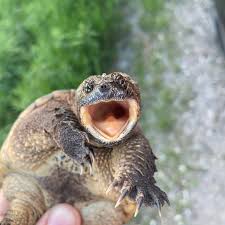The Northern False Map Turtle, scientifically known as “Graptemys pseudogeographica”, is a fascinating species of pond turtle native to the central United States. Characterized by its distinctive, map-like markings and false beak, this remarkable reptile thrives in large river systems, wetlands, and lakes, contributing significantly to the region’s biodiverse ecosystem.
Habitat and Distribution
- Habitats refer to the natural surroundings where a species lives, encompassing everything from the soil, water, climate, plants, and other animals in the area.
- Distribution refers to how the species is dispersed or spread across its habitat or geographical area.
- Factors influencing habitat and distribution can include the availability of food and water, the presence of predators or competitors, the suitability of the climate, and the physical characteristics of the environment.
- Temporary changes in distribution can occur due to seasonal migrations in response to changes in food availability or breeding needs.
- Permanent changes in distribution, often resulting from human influence, can lead to a species becoming threatened or endangered.
- Conservation efforts often focus on preserving or restoring habitats to support the survival and distribution of species.
Physical Characteristics
- Height – An individual’s height can significantly influence their physical appearance. This aspect is typically determined by genetics, although nutrition and general health during growth phases can also play a key role.
- Weight – This characteristic is largely dependent upon an individual’s lifestyle, including diet and physical activity levels. Weight can also be influenced by genetics and certain medical conditions.
- Eye Color – Eye color is a hereditary trait that depends on the genes inherited from parents. It can range from various shades of blue, green, and brown to gray.
- Hair Color and Texture – Like eye color, hair color and texture are primarily genetic traits. Hair can be straight, curly, wavy, or coiled, and its color can vary from black, brown, blonde, red to various shades in between.
- Skin Tone – This is determined by the amount and type of melanin in the skin. Genetic factors largely regulate this, but environmental factors like sun exposure can also affect skin color.
- Body Shape – This refers to the general physical form of an individual’s body, and it can be influenced by various factors, including skeletal structure and distribution of muscle and fat.
Geographic Distribution
- Geographic distribution refers to the way something is spread across a certain area or the world.
- It is observed in various contexts such as species distribution in ecology, cultural and linguistic distribution in anthropology, and market distribution in business.
- In geography, factors like climate, terrain, and availability of resources greatly influence the distribution of populations.
- Geographic distribution is often visualized using tools like maps and charts. With technology advancements, Geographic Information Systems (GIS) provide detailed, dynamic representations.
- Changes in geographic distribution can indicate significant trends and shifts, like climate change effects on wildlife or market expansion in global business.
Related Post : The Enigmatic Life of the Wood Turtle
Distinguishing Features
- Diversity: The distinguishing feature of a vibrant ecosystem is its diversity. This includes a wide variety of plants, animals, and microorganisms interacting within the same environment.
- Resilience: Resilience refers to the capacity of a system to resist and recover from disturbances. For instance, a forest recovering rapidly after a wildfire demonstrates resilience.
- Productivity: This refers to the rate at which energy is converted into organic substances by an ecosystem’s producer organisms.
- Complexity: Complexity, in the context of an ecosystem, is characterized by the intricate and interwoven relationships among the various organisms and their environment.
- Stability: Stability represents the ability of an ecosystem to maintain its structure and functions over time, despite external pressures and changes.
Identification of Similar Species
- Physical Characteristics: The most direct way to identify similar species is by contrasting their physical characteristics. This could include size, shape, color, and the presence of any distinct markings or features.
- Habitat: Species that inhabit similar environments often share common characteristics. By observing the habitat, one can often infer information about the species.
- Behavior: The behavior of an organism, including feeding habits, mating rituals, and interaction with other organisms, can provide clues about its species.
- Genetic Analysis: With advancements in technology, genetic analysis can provide definitive proof of a species. DNA comparisons can highlight similarities and differences at a molecular level.
- Vocalization: Many species, particularly birds, have unique calls or songs. These vocalizations can be used to identify similar species.
Conclusion
- Language codes, such as “EN-US”, play a crucial role in formatting documents to ensure cultural and linguistic appropriateness, thus enhancing the user experience.
- The “EN-US” code, in particular, refers to American English, dictating the use of vocabulary, spelling, and grammar specific to the United States.
- Recognizing and implementing these language codes facilitates clear and effective communication across diverse populations and geographic locations.
Category: Turtle
